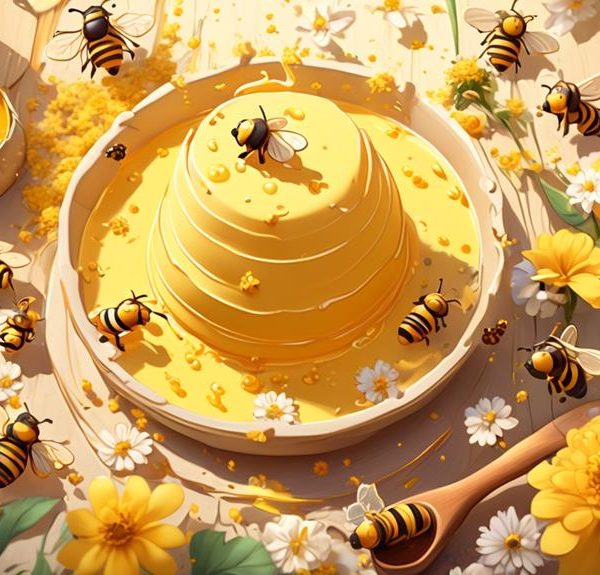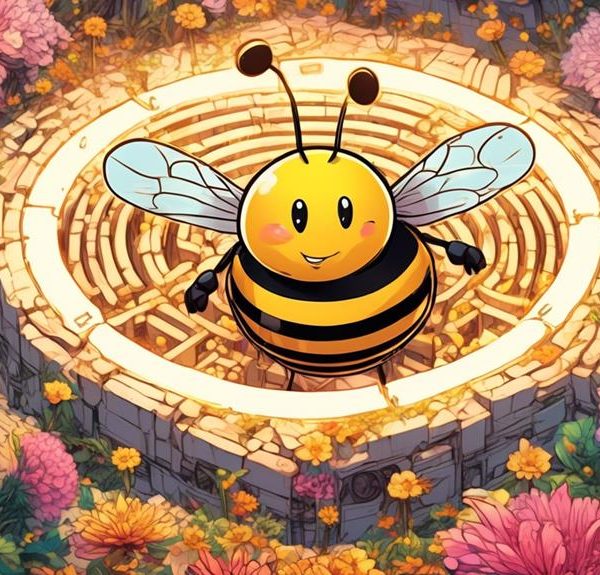Study the subtle yet surprising differences between bees and bumblebees, from their unique anatomies to their distinct societal structures and habits.
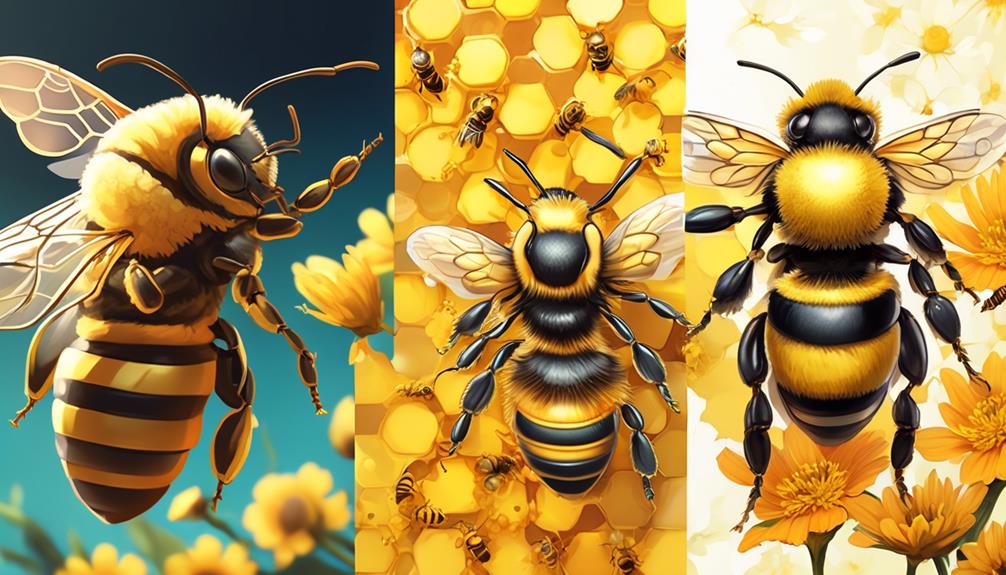
Difference Between a Bee and a Bumblebee?
Just as stars and planets both light up the night sky, yet hold distinct identities, so too do bees and bumblebees share a common sphere while possessing unique characteristics.
You may have noticed these buzzing creatures in your backyard or local park, both playing vital roles in our ecosystem, but do you know the subtle differences that set them apart?
The nuances in their anatomy, social structures, nesting habits, and even foraging behavior paint a fascinating picture of diversity within the insect world.
Let's embark on a journey to explore these intriguing differences and find out why it's not just all about the 'buzz'.
Key Takeaways
- Bees have three main body parts: head, thorax, and abdomen, while bumblebees are larger and hairier compared to other bee species.
- Bumblebees can thermoregulate and work in cooler temperatures, making them more adaptable than other bees.
- Bumblebee colonies consist of a single queen, female workers, and male drones, while honeybee colonies can contain up to 60,000 bees.
- Honeybees use the 'waggle dance' to communicate the location of flower patches, while bumblebees rely on personal memory for foraging and can buzz pollinate by vibrating their bodies to release pollen.
Understanding Basic Bee Anatomy
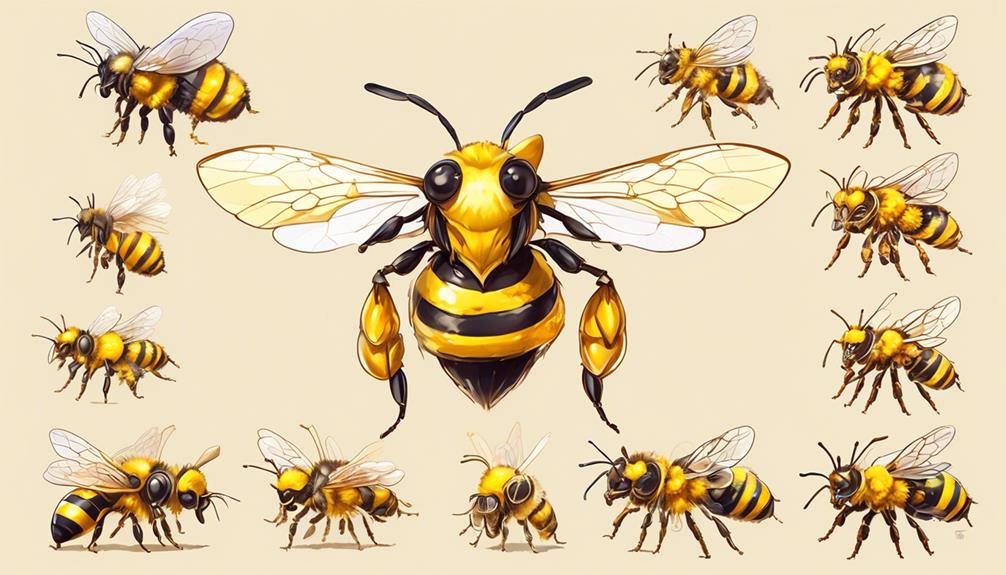
To fully comprehend the differences between a bee and a bumblebee, you'll first need to get familiar with the basic anatomy of a bee. Bees are insects and, like all insects, they've three main body parts: the head, thorax, and abdomen. On their head, they've two antennae for sensing their environment and compound eyes for detecting light and movement. The thorax is where you'll find their wings and legs. Bees have two pairs of wings and three pairs of legs, each with a different function.
The abdomen houses their digestive and reproductive systems. It's also where you'll find the stinger, an essential defense tool for bees. Fascinatingly, a bee's stinger is a modified ovipositor (an organ used for laying eggs), which is why only female bees can sting.
Their body is covered in hair, which helps in pollen collection. They're also known for their coloration, most commonly black and yellow, which serves as a warning to predators.
Understanding these basics will give you a solid foundation for recognizing the differences between a bee and a bumblebee.
Bumblebee Characteristics Explained

Now that you're familiar with general bee anatomy, let's dive into the specifics of bumblebee characteristics to better appreciate their unique features. Bumblebees, belonging to the genus Bombus within the bee family, are often larger, hairier, and more robust compared to other bee species. They're known for their distinctive black and yellow body color, although variations do exist.
One of the most unique characteristics of bumblebees is their ability to thermoregulate. This means they can control their body temperature, allowing them to work in cooler temperatures than most other bees. They do this by shivering their flight muscles to generate heat.
Here's a quick comparison table for you:
Characteristic | Bumblebee |
|---|---|
Size | Larger |
Body | Hairier |
Color | Mostly black and yellow |
Thermoregulation | Capable |
Another interesting fact about bumblebees is their social structure. Most species form colonies, with a single queen who lays the eggs, and worker bees who gather food and care for the young. However, unlike honeybees, bumblebee colonies are annual, not perennial. They start anew each spring with a single queen who has overwintered.
Interaction and Social Structure
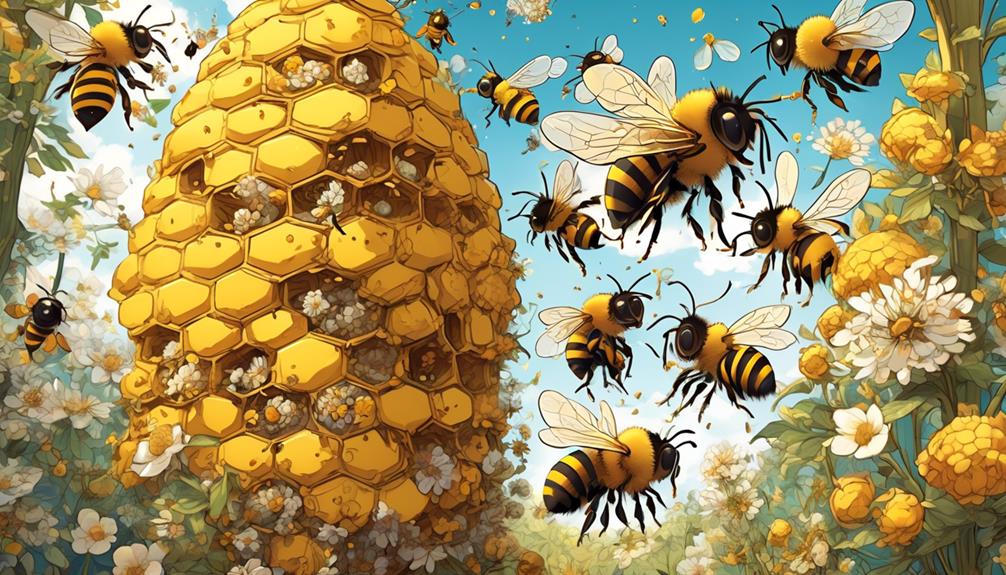
Delving into the social structure of bumblebees, you'll find a fascinatingly complex world of interaction, where each bee plays a specific role in the functioning of the colony. Bumblebee colonies typically consist of a single queen, who's the sole egg-layer, and her offspring, which include female workers and male drones.
As the queen, she's responsible for the establishment and survival of the colony. She lays the eggs, while the workers, who are her daughters, perform tasks like foraging for food, caring for the young, and defending the nest.
In contrast, drones, the sons of the queen, have a single function: to mate with a virgin queen from another colony, thereby ensuring the survival of their genetic lineage. Post-mating, drones die, having fulfilled their purpose.
Bumblebee colonies are seasonal and only last for a year. The old queen and her workers die by the end of the season, leaving behind only new queens to hibernate through winter and start new colonies come spring.
Now, honeybees have a similar social structure but their colonies are perennial, with a queen living several years. This difference in social longevity makes bumblebee and honeybee colonies distinct in their interaction and structure.
Variances in Nesting Habits
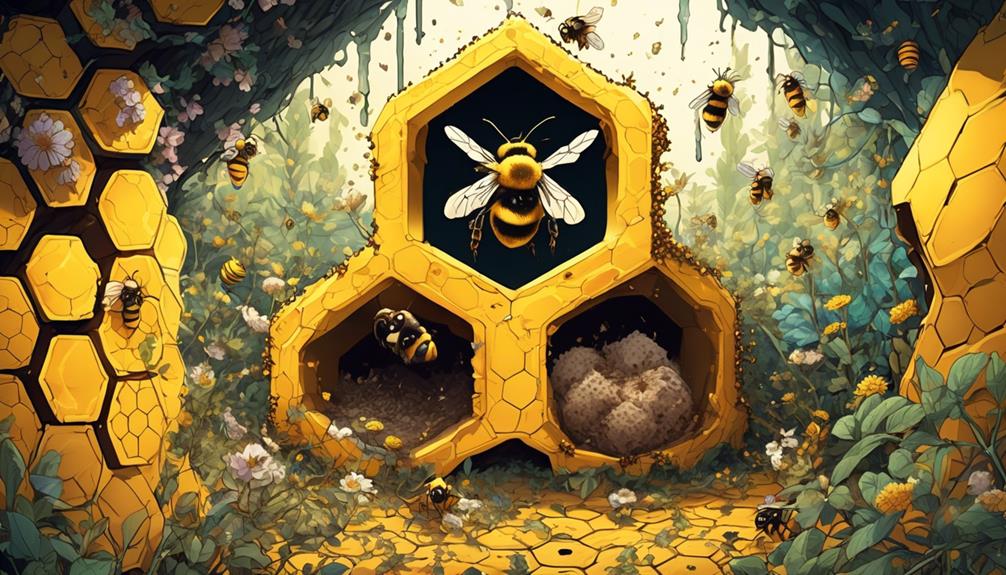
In exploring the differences between bees and bumblebees, one distinct divergence lies in their unique nesting habits. You'll find that while both species are eusocial, living in complex, organized colonies, the specifics of their residences differ vastly.
Honeybees, a common type of bee, construct intricate, vertical wax combs inside tree cavities or man-made hives. These combs, filled with numerous hexagonal cells, are used for honey storage, and as brood chambers for the queen's eggs. You might be surprised to learn that honeybees maintain a constant temperature inside their hives year-round, a feat they achieve through a collective 'shivering' action.
Bumblebees, on the other hand, prefer simpler abodes. They often nest in small cavities, like abandoned rodent burrows, or under piles of leaves. Rather than building wax combs, they form small wax pots to store honey and pollen. Bumblebee nests are typically smaller, housing at most a few hundred individuals, in contrast to honeybee hives that can contain up to 60,000 bees.
In essence, you'll find that bees and bumblebees, while similar in many ways, exhibit fascinating differences in their nesting habits, reflecting their adaptability to diverse environments.
Distinctive Foraging Behavior
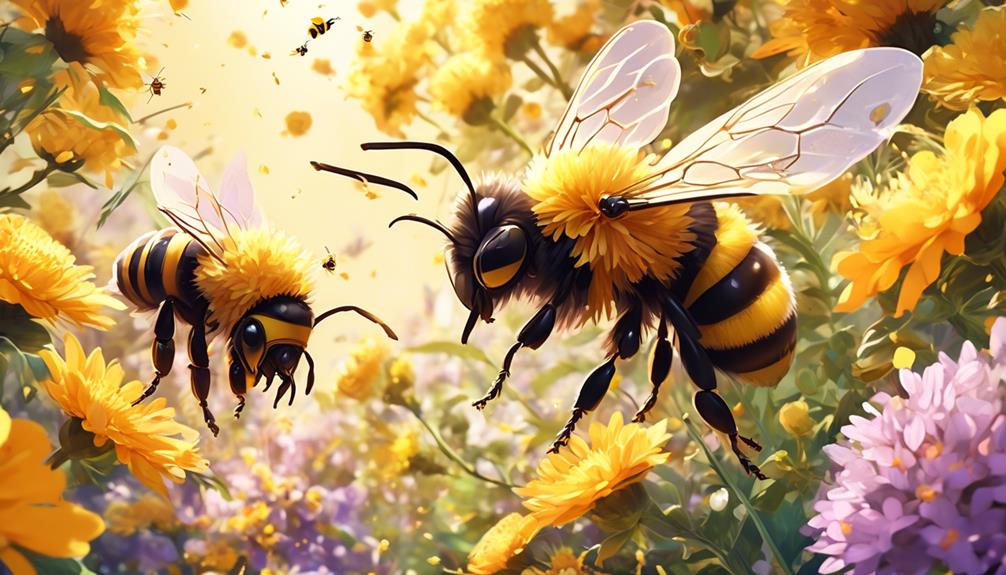
Moving beyond their contrasting nesting habits, let's explore how bees and bumblebees also differ significantly in their foraging behaviors.
Honey bees, for instance, are known for their remarkable efficiency. They use the 'waggle dance' to communicate the location of rich, untapped flower patches to their hive mates. This dance, combined with scent markers, allows the hive to mobilize quickly and focus on the most profitable nectar sources.
Bumblebees, on the other hand, display a more individualistic approach. They're solitary foragers, relying on their personal memory to revisit rewarding flower patches. Moreover, bumblebees are equipped to forage under adverse weather conditions, such as rain and lower temperatures, when honey bees would typically stay in the hive.
Interestingly, bumblebees also have the ability to 'buzz pollinate'. By vibrating their bodies at a certain frequency, they cause flowers to release pollen. This technique is particularly useful for pollinating certain types of crops, like tomatoes and blueberries, which honey bees can't effectively pollinate.
Frequently Asked Questions
What Are the Significant Differences Between the Stings of a Bee and a Bumblebee?
You're wondering about the differences between a bee and a bumblebee sting.
A honeybee leaves its stinger in you, dying afterward. You'll likely experience more pain and swelling.
In contrast, a bumblebee doesn't lose its stinger, so it can sting multiple times. However, bumblebees are typically less aggressive and their sting is considered less painful.
Do Bees and Bumblebees Have Different Pollination Patterns?
Yes, bees and bumblebees do have different pollination patterns.
Bees typically target a variety of plants and flowers for pollination. They have a broad approach, covering many kinds of flora.
On the other hand, bumblebees are more selective. They focus on specific types of plants that have the pollen and nectar they prefer.
What Are the Major Differences Between the Lifespans of Bees and Bumblebees?
You're wondering about the lifespan differences between bees and bumblebees.
Well, honey bees typically live 4 to 5 weeks. However, the queen bee can live up to 5 years.
On the other hand, bumblebees have shorter lifespans. Worker bumblebees live up to 4 weeks, while the queen survives up to a year.
How Do Bees and Bumblebees React to Different Weather Conditions?
You're curious about how bees and bumblebees react to different weather conditions.
Bees generally stay in their hives during cold, rainy, or windy conditions. They're sun-lovers and thrive in warm weather.
Bumblebees, however, are hardier. They can venture out in cooler and adverse weather conditions, thanks to their thick fur coat.
It's fascinating how these tiny creatures adapt to their environment, isn't it?
Are There Any Unique Diseases or Parasites That Affect Either Bees or Bumblebees?
Yes, there are unique diseases and parasites that affect bees and bumblebees.
Bees often suffer from American Foulbrood, a bacterial disease that destroys their larvae.
Bumblebees, on the other hand, are prone to a parasitic fungus called Nosema bombi.
It's important you're aware of these issues if you're planning on keeping bees or bumblebees, as they can seriously impact the health and productivity of your colonies.
Conclusion
So, you see, while they might look similar, bees and bumblebees are quite different. From body structure to social behavior, nesting habits, and foraging patterns, these little creatures have unique traits that set them apart.
It's not just about the buzz, it's also about the biology and the behavior. Next time you see one buzzing around, take a closer look – you'll be surprised at the incredible diversity of the bee world.

